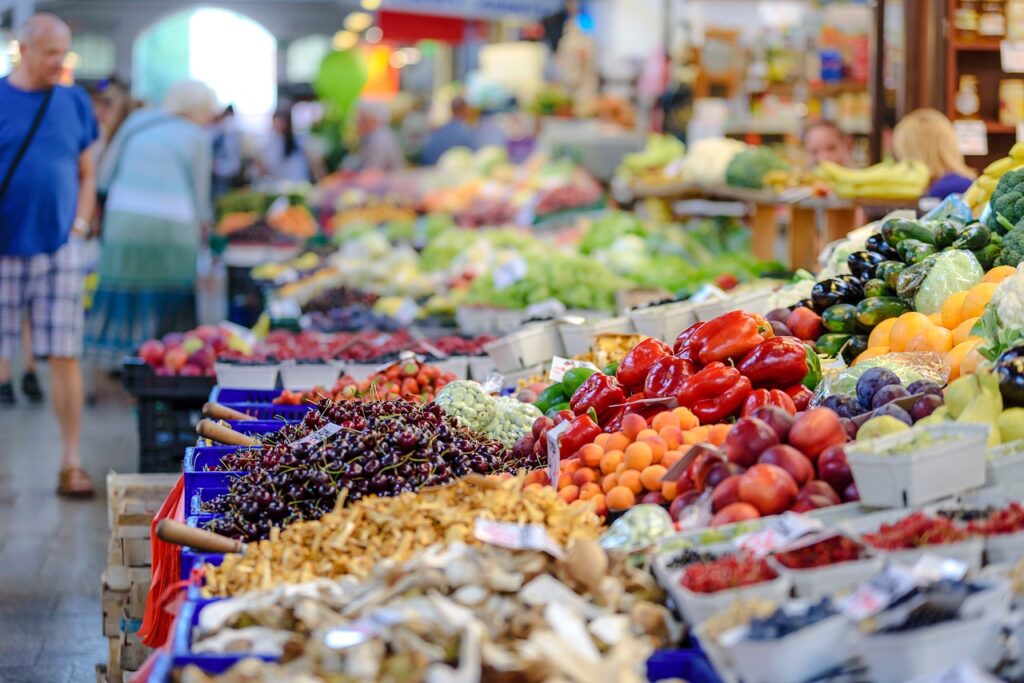Harnessing Data-Driven Models to Improve Local Food Supply Chains
When local and non-local foods cost the same, almost everyone goes for local. As that price gap gets smaller, lots of amazing things start happening, but two big wins stand out: local food businesses get a nice boost (meaning they can hang in there and find fresh opportunities to grow), and sustainable choices become profit drivers. Data-driven interactive models serve as a playbook for planning and collaborating. They can be used by anyone, from small players like food producers or stores, to umbrella organizations with broader goals like food hubs, economic agencies, research groups, or entire communities. They’re extremely helpful when it comes to making decisions about our food supply chains and how to narrow that price gap. Models can help build compelling narratives to motivate consumers, policy-makers, and businesses to support local food initiatives. The data from these models also become a vital resource for research helping to tackle the ongoing supply chain hurdles in rural communities.
Expansion, diversification, and increased competitiveness in the local food industry
As the price gap between local and non-local food decreases, local food businesses can become increasingly competitive. This not only allows for expansion in terms of business size and market share, but it also paves the way for diversification. Local food businesses can venture into new areas of food production and distribution, capitalizing on unique local resources and preferences. This diversity can help strengthen the local food industry, making it resilient in the face of market changes and competitive pressures. Data-driven models play a key role in this transformation, providing insights that guide strategic planning, decision-making, and innovation.


Sustainable choices become profit drivers
Consumers are increasingly conscious of the environmental footprint of their purchases, and a decreasing price gap between local and non-local foods encourages them to gravitate towards more sustainable options.
When effectively implemented, a commitment to sustainability not only attracts customers but also streamlines business operations, making them leaner and more efficient. This reduces costs while bolstering competitiveness. Crucially, these shifts can trigger a ripple effect throughout the supply chain, inspiring suppliers and distributors to adopt environmentally responsible practices and establishing a higher industry standard for sustainability.
Data-driven models play an instrumental role in this transformative process. They provide insights into the most effective and efficient sustainable practices for each business’s unique context. This enables businesses to identify opportunities for improvement and to establish a strategic roadmap for implementing these changes. Consequently, businesses can make well-informed decisions that benefit the planet, improve their operations, and boost their bottom line.
Expansion, diversification, and increased competitiveness in the local food industry
As the price gap between local and non-local food decreases, local food businesses can become increasingly competitive. This not only allows for expansion in terms of business size and market share, but it also paves the way for diversification. Local food businesses can venture into new areas of food production and distribution, capitalizing on unique local resources and preferences. This diversity can help strengthen the local food industry, making it resilient in the face of market changes and competitive pressures. Data-driven models play a key role in this transformation, providing insights that guide strategic planning, decision-making, and innovation.
Sustainable choices become profit drivers
Consumers are increasingly conscious of the environmental footprint of their purchases, and a decreasing price gap between local and non-local foods encourages them to gravitate towards more sustainable options.
When effectively implemented, a commitment to sustainability not only attracts customers but also streamlines business operations, making them leaner and more efficient. This reduces costs while bolstering competitiveness. Crucially, these shifts can trigger a ripple effect throughout the supply chain, inspiring suppliers and distributors to adopt environmentally responsible practices and establishing a higher industry standard for sustainability.
Data-driven models play an instrumental role in this transformative process. They provide insights into the most effective and efficient sustainable practices for each business’s unique context. This enables businesses to identify opportunities for improvement and to establish a strategic roadmap for implementing these changes. Consequently, businesses can make well-informed decisions that benefit the planet, improve their operations, and boost their bottom line.


Facilitating Sustainable Decisions
The goal at TruGIS is to foster collaboration by providing a shared platform for all stakeholders. This platform enables a holistic, data-informed perspective of the food supply chain, facilitating alignment of goals and strategies among different players. Ultimately, everything comes down to creating an inclusive, data-driven platform tailored to the food industry. This tool helps all parties involved understand how their decisions impact the entire supply chain, thereby encouraging smarter choices that benefit individual goals, the whole supply chain, and our planet. To learn more or become a participating organization contact support@trugis.ca.



